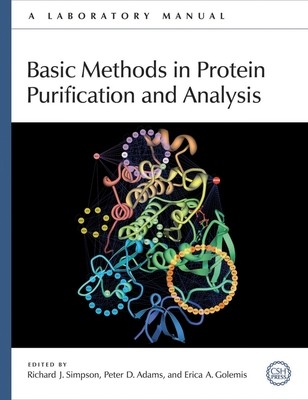
- We will send in 10–14 business days.
- Publisher: Cold Spring Harbor Laboratory Press
- ISBN-10: 0879698675
- ISBN-13: 9780879698676
- Format: 21.3 x 27.9 x 2.5 cm, minkšti viršeliai
- Language: English
- SAVE -10% with code: EXTRA
Basic Methods in Protein Purification and Analysis: A Laboratory Manual (e-book) (used book) | bookbook.eu
Reviews
Description
Understanding how proteins function is an essential part of many biological research endeavors. The complexity and sheer number of proteins in a cell are impediments to identifying proteins of interest or purifying proteins for function and structure analysis. Thus, reducing the complexity of a protein sample or in some cases purifying a protein to homogeneity is necessary. The latest manual in the Basic Methods series contains a collection of convenient and easy to use protein purification protocols along with a sampling of dependable methods for assessing proteinDSprotein interactions. The protocols are supported by background information to assist researchers in understanding how the purification methods work and how to optimize and troubleshoot the methods. The collection of essential methods found in Basic Methods in Protein Purification and Analysis is mainly drawn from the popular manuals Proteins and Proteomics, Purifying Proteins for Proteomics, and ProteinDSProtein
Interactions, 2nd Ed. In addition to protocols for purification using gel electrophoresis and column chromatography, this book contains tested methods for preparing cellular and subcellular extracts--a critical and often neglected step in successful protein purification. Rounding out the manual are methods for characterizing proteinDSprotein interactions, an extensive appendix of essential methods for quantifying protein concentration, stabilizing and storing proteins, concentrating proteins, and immunoblotting. Finally, there is a new chapter on a method complementary to gel electrophoresis and chromatography: in silico analysis of genomic and proteomic databases.
EXTRA 10 % discount with code: EXTRA
The promotion ends in 23d.00:39:09
The discount code is valid when purchasing from 10 €. Discounts do not stack.
- Publisher: Cold Spring Harbor Laboratory Press
- ISBN-10: 0879698675
- ISBN-13: 9780879698676
- Format: 21.3 x 27.9 x 2.5 cm, minkšti viršeliai
- Language: English English
Understanding how proteins function is an essential part of many biological research endeavors. The complexity and sheer number of proteins in a cell are impediments to identifying proteins of interest or purifying proteins for function and structure analysis. Thus, reducing the complexity of a protein sample or in some cases purifying a protein to homogeneity is necessary. The latest manual in the Basic Methods series contains a collection of convenient and easy to use protein purification protocols along with a sampling of dependable methods for assessing proteinDSprotein interactions. The protocols are supported by background information to assist researchers in understanding how the purification methods work and how to optimize and troubleshoot the methods. The collection of essential methods found in Basic Methods in Protein Purification and Analysis is mainly drawn from the popular manuals Proteins and Proteomics, Purifying Proteins for Proteomics, and ProteinDSProtein
Interactions, 2nd Ed. In addition to protocols for purification using gel electrophoresis and column chromatography, this book contains tested methods for preparing cellular and subcellular extracts--a critical and often neglected step in successful protein purification. Rounding out the manual are methods for characterizing proteinDSprotein interactions, an extensive appendix of essential methods for quantifying protein concentration, stabilizing and storing proteins, concentrating proteins, and immunoblotting. Finally, there is a new chapter on a method complementary to gel electrophoresis and chromatography: in silico analysis of genomic and proteomic databases.


Reviews